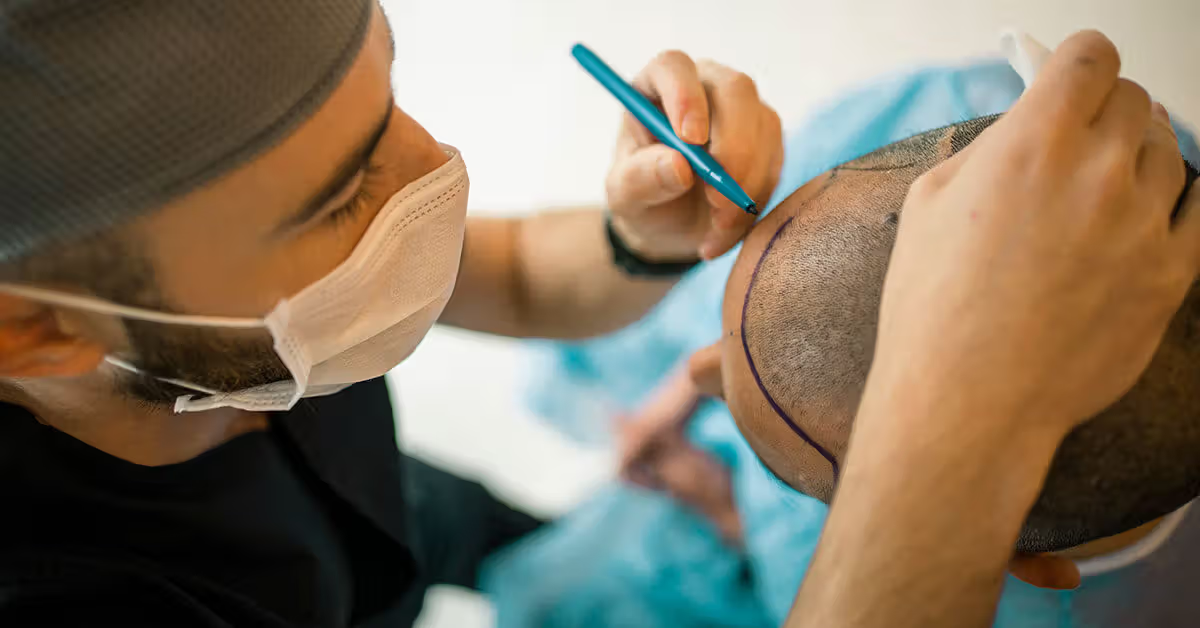Hair loss is a common concern for both men and women, affecting confidence and self-esteem. Whether caused by genetics, aging, hormonal changes, or medical conditions, thinning hair can be distressing. Fortunately, medical advancements have made hair restoration more effective than ever. If you’re considering a permanent solution, a hair transplant might be the right option.
With growing demand, hair restoration clinics worldwide offer advanced procedures, with many patients choosing destinations like Dubai for high-quality treatments. If you’re wondering whether a hair transplant in Dubai is the right choice for you, it’s essential to understand the pros, cons, and what to expect from the procedure.
What is a Hair Transplant?
A hair transplant is a surgical procedure that involves moving hair follicles from one part of the scalp (usually the back or sides) to areas experiencing hair loss. This method ensures natural hair regrowth, restoring thickness and coverage.
There are two main techniques used in hair transplantation:
- Follicular Unit Transplantation (FUT) – A strip of skin containing hair follicles is removed, dissected, and implanted into balding areas.
- Follicular Unit Extraction (FUE) – Individual follicles are harvested directly from the donor area and implanted into thinning or bald spots.
Both techniques aim to achieve natural-looking results, but FUE is often preferred due to its minimal scarring and quicker recovery time. Many clinics specializing in hair transplants in Dubai offer these methods with state-of-the-art technology.
The Pros of a Hair Transplant
1. Permanent and Natural Results
Unlike temporary solutions such as wigs or hairpieces, a hair transplant provides a permanent solution to hair loss. Once transplanted, the follicles continue to grow naturally, blending seamlessly with existing hair.
2. Boosts Confidence and Self-Esteem
Hair loss can impact one’s self-image, leading to social anxiety or low self-esteem. Restoring hair can enhance confidence, making individuals feel more comfortable in personal and professional settings.
3. Low Maintenance
Transplanted hair requires no special maintenance beyond regular hair care routines. Unlike artificial hair solutions, transplanted follicles behave like natural hair, allowing for normal washing, cutting, and styling.
4. Minimally Invasive with a Short Recovery Time
With the advancements in FUE, hair transplantation has become a minimally invasive procedure. Patients can resume most activities within a few days, making it a convenient option for those with busy lifestyles.
5. Customizable and Suitable for Different Hair Types
Hair transplant procedures are tailored to each patient’s hair type, density, and desired results. Surgeons carefully plan the placement of grafts to create a natural-looking hairline and improve overall scalp coverage.
6. Suitable for Both Men and Women
While male pattern baldness is a common reason for seeking a transplant, women also experience thinning hair. Hair transplant procedures cater to both genders, addressing different patterns of hair loss.
The Cons of a Hair Transplant
1. Not Suitable for Everyone
Not all individuals are ideal candidates for a hair transplant. Factors such as insufficient donor hair, underlying health conditions, or unrealistic expectations may affect eligibility. A consultation with a specialist can determine if the procedure is right for you.
2. Requires Patience for Full Results
Unlike hairpieces or topical treatments that provide instant results, transplanted hair takes time to grow. It can take several months before noticeable improvements appear, with full results typically visible within a year.
3. Possible Side Effects
As with any surgical procedure, hair transplantation comes with potential side effects, including:
- Temporary swelling and redness
- Mild discomfort or itching
- Shock loss (temporary shedding of transplanted hair before new growth begins)
Most of these side effects subside within a few weeks, but it’s important to follow post-procedure care guidelines.
4. Cost Considerations
A high-quality hair transplant can be expensive, particularly when performed by experienced specialists using advanced techniques. However, many consider it a worthwhile investment due to its permanent results. Those looking for the best hair transplant in Dubai should compare clinics based on reputation, technology, and patient reviews.
5. Multiple Sessions May Be Needed
Depending on the extent of hair loss, some patients may require multiple sessions to achieve optimal density. This can add to the overall cost and time commitment.
What to Expect Before, During, and After a Hair Transplant
Before the Procedure
- Consultation – A hair transplant specialist will evaluate your scalp, discuss goals, and recommend the most suitable technique.
- Pre-Surgery Preparations – Patients are advised to avoid alcohol, smoking, and certain medications that may affect healing.
- Hairline Design and Planning – Surgeons design a natural-looking hairline based on facial proportions and hair density.
During the Procedure
- The procedure is performed under local anesthesia, ensuring minimal discomfort.
- Depending on the number of grafts, the session can last anywhere from 4 to 8 hours.
- The surgeon extracts and implants hair follicles with precision, ensuring natural placement.
After the Procedure
- Immediate Recovery – Patients may experience mild swelling or redness, but these effects subside within a few days.
- Post-Procedure Care – Instructions include avoiding excessive sun exposure, refraining from intense exercise, and using prescribed shampoos.
- Initial Shedding (Shock Loss) – Transplanted hair may shed within the first few weeks, a normal part of the process before regrowth begins.
- Gradual Hair Growth – New hair starts appearing within 3 to 6 months, with full results visible after 12 months.
Final Thoughts
A hair transplant is a life-changing procedure for those struggling with hair loss. While it offers permanent and natural results, it’s important to weigh the pros and cons before making a decision. Individuals seeking the best hair transplant in Dubai can benefit from world-class expertise, cutting-edge technology, and personalized care.
If you’re considering a hair transplant in Dubai, consulting a qualified specialist is the first step toward achieving the hair restoration results you desire. By understanding the procedure, managing expectations, and following proper aftercare, you can enjoy a fuller, more confident appearance for years to come.
